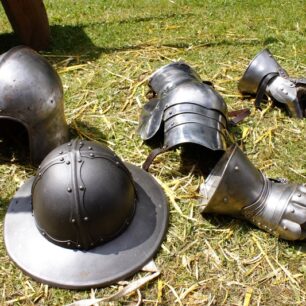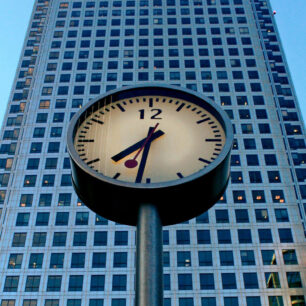Who Was Eusebi Güell and His Connection with Antoni Gaudí
Every great artist needs a visionary who believes in them.
For Antoni Gaudí, that person was Eusebi Güell, a wealthy industrialist and lover of the arts who lived in 19th-century Barcelona.
Güell admired Gaudí’s unique imagination and gave him creative freedom. Their friendship changed Barcelona forever — leading to creations like Park Güell, Palau Güell, and this earlier project, the Güell Pavilions.
The Pavilions were the first real collaboration between Güell and Gaudí. Built between 1884 and 1887, they show Gaudí’s early style — rich with symbolism, nature, and mythology.
When you visit, you’re not just looking at buildings; you’re seeing the beginning of one of the greatest architectural partnerships in history.

A Short History of the Güell Estate and the Pavilions
The Güell Pavilions are found in the quiet and elegant area of Pedralbes, once outside the busy city.
The estate, known as Finca Güell, was originally a large private property owned by the Güell family. Gaudí was asked to design the entrance gate, gatehouses, and stables for the estate.
These small buildings were the beginning of Gaudí’s “Orientalist period,” where he used inspiration from Islamic and Asian art — full of arches, colorful tiles, and patterned bricks.
Today, the original estate is gone, but the entrance gate and pavilions remain — a piece of 19th-century Barcelona hidden among trees and quiet streets.

The Gate of the Dragon – Symbolism and Story
The most famous part of the Güell Pavilions is the iron gate, shaped as a large dragon or serpent.
It was designed by Gaudí himself, built by the blacksmith Vallet i Piquer. The gate is enormous, powerful, and full of meaning.
Why a dragon?
Gaudí was inspired by the Greek myth of the Garden of the Hesperides — a paradise protected by a dragon. This story also appeared in the Catalan poem L’Atlàntida, which Eusebi Güell loved.
If you look carefully, you’ll notice that above the dragon there’s a small orange-tree design, symbolizing the garden that the dragon protected.
Standing before the gate, I felt it was more than a piece of metal — it felt alive. The dragon’s iron wings seemed ready to move, guarding something sacred behind the walls.

The Architecture You Can See from Outside
Even from outside, there’s a lot to notice and admire:
- Brickwork and tiles: The walls mix red bricks and colorful ceramics in a perfect rhythm.
- Curved lines: Gaudí used arches and curves instead of flat forms — a preview of his later famous style.
- Small towers: On each side of the gate, there are cone-shaped towers covered with bright tiles.
- Nature and geometry: You can see how Gaudí already played with natural shapes, turning simple materials into something alive.
The whole design feels like a fairytale — a mix between medieval, Arabic, and futuristic.

My Visit and Impressions
I visited the Güell Pavilions on a quiet morning. The area around Avinguda de Pedralbes is calm, elegant, and green.
As I walked down the street, the gate suddenly appeared — strong, mysterious, and full of presence.
You don’t need to buy a ticket. The visit is completely free if you only explore from the outside.
The iron dragon alone makes the trip worth it. It’s one of those moments in Barcelona where you can enjoy Gaudí’s genius without the crowds.
I spent some time observing the details: the shine of the iron, the pattern of the bricks, and the quiet sound of birds in the garden.
You can easily imagine how it must have looked in the 1880s when carriages passed through this very entrance.

Practical Travel Tips
Location:
Avinguda de Pedralbes 7, Barcelona.
How to Get There:
- Metro: Take Line 3 (green) to Maria Cristina station. From there it’s about a 10-minute walk.
- Bus: Lines 7, 33, 63, 67, 75, 78, H6, or V5 stop nearby.
Opening & Entry:
You can freely view the gate and outer structures any time of day. The inner pavilions are sometimes open for guided tours, but the exterior is always visible.

Cost:
Completely free from the outside.
Best Time to Visit:
Morning or late afternoon, when the light hits the brick walls beautifully and it’s less busy.
Nearby Spots:
- Palau Reial de Pedralbes – another elegant place to visit close by.
- Les Corts area – full of local cafés and tapas bars for a relaxed lunch.
Travel Tip:
Bring a camera — the light on the dragon gate changes during the day, and every angle looks different.

Curious and Fun Facts
- The dragon gate is said to align with the stars of the Serpens constellation.
- The gate was once used as the main entrance for the Güell family’s carriages.
- The design marks the first time Gaudí combined ironwork and myth — a mix he would use for the rest of his life.
- The pavilions were declared a Historic Artistic Monument of Spain in 1969.
- The iron dragon’s eyes are made of glass, giving them an almost real expression.

Why You Should Visit
Many tourists go straight to Park Güell or La Sagrada Familia — both incredible, of course — but the Güell Pavilions show where Gaudí’s imagination began.
Here, you can feel the early fire of his genius, in peace and silence.
It’s the perfect place for a short stop, a free visit, or a quiet walk in the Pedralbes neighbourhood.
It’s a hidden gem where you can stand face-to-face with a mythical dragon and the start of a legend.

Travel far, feel deeply, live fully.





